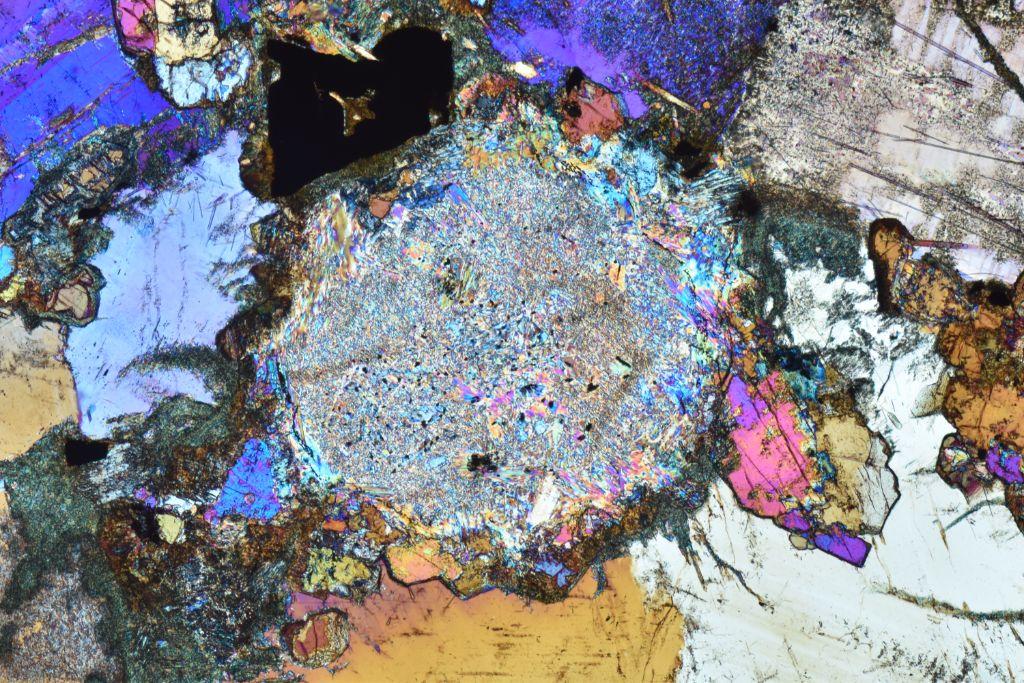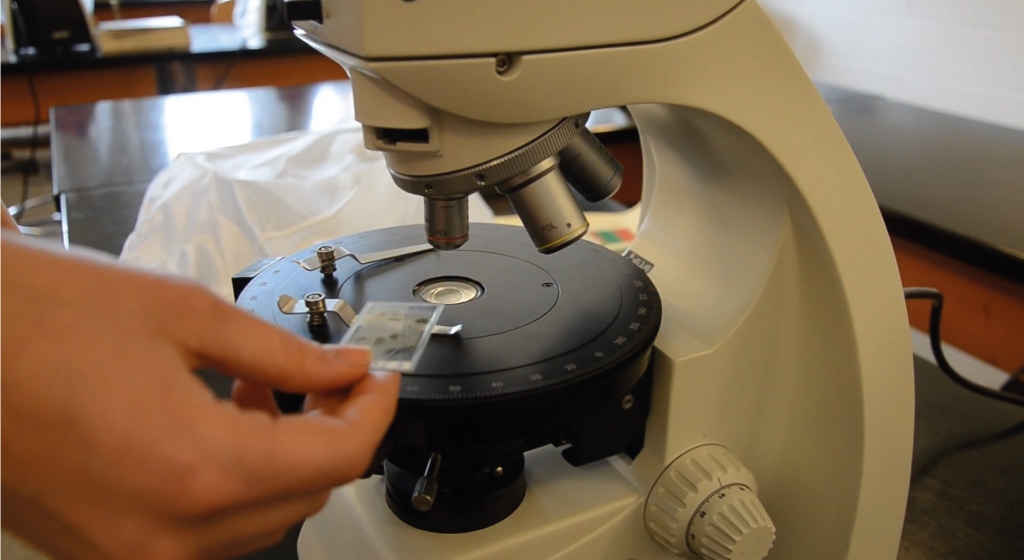How did the project Inside Stone come up?
Is really everything as it seems? We do NOT believe that! This question stood behind the project of Inside Stone, a healthy degree of curiosity was what prompted us to search for another world (see "Just Another World"!), a world made of invisible microscopic forms with wonderful colours that can be discovered by the naked eye when adequately illuminated!
What do the pictures of Inside Stone represent?
It’s about time to reveal where the pictures of Inside Stone come from... THEY ARE PHOTOGRAPHS!
Actually, the small pieces of rock are enlarged and illuminated by polarized light! These are not fantasy images or fake photos, all materials are real and not artificially altered!
How did we get the photos?
Here some technical information about the procedure of how we got these spectacular photos. Pictures from selected material were taken by a digital camera, fixed on an optical microscope and illuminated by transmitted polarized light, generally using two crossed polarizers.
For reasons of transparency, a very thin plate was sliced from the rock, then reduced to a micro-plate of 30-micron thickness and fixed on a glass plate ready for the visual analysis: this ‘thin section’ is the real subject of the geologist’s research. This special technique does not include picture editing during or after the photo shooting: the variety and tones of the interference colours are the results of the natural propagation of polarized light when using compensating filters with a pre-defined delay of wavelength.
Apart from some crystals (as chalk), all the pictures were taken from thin plates of metamorphic or igneous rock. The size of these subjects varies in the range of 0.2 - 5.0 mm, corresponding to 2,5X to 20X lens magnification.
Inside Stone: a great collaboration
While developing our project which we started a month ago, Prof. Bernardo Cesare, professor of Petrology at the Department of Geosciences of the University of Padua, helped us. His scientific interests include metamorphism and melting of rocks, mineralogy and the study of mineral inclusions. He extensively uses photomicrographs and macrophotographs to describe the studied subjects and their morphological features.
Prof. Cesare is a geologist who helped us choosing the material and thanks to his studies and analysis, he showed us a "new world".
This is the ideal project I had always dreamt to be involved in. It is like being a kid in a candy store: the variety of marbles, and especially granites in a company like Marmi Rossi allows infinite options for aesthetic microphotography. No wonder I was extremely excited of starting a collaboration and take artistic images of a selection of rocks. I should do them all!
Thanks to Prof. Cesare we’ve received this surprising collection of wonderful pictures that we called "Inside Stone".
The Author
Born in Venice, Italy, in 1963, Bernardo Cesare is Professor of Petrology at the Department of Geosciences of the University of Padova, Italy. His scientific interests include metamorphism and melting of rocks, mineralogy, and the study of inclusions in minerals. He extensively uses photomicrographs and macrophotographs to describe the subjects of study and their morphological features. In 2009 the starts the MicROCKScopica - Rock Art project, gaining international recognition: his rock photomicrographs have been displayed in photo galleries, at mineralogical and scientific exhibitions, in Natural Sciences Museums in Italy, France, Germany, Hungary, Poland, Spain, Switzerland, UK and USA, and published in photographic and popular magazines, and in geological journals.
[widgetkit id="14"]
No photographer has been mistreated in this experiment! ;-)






